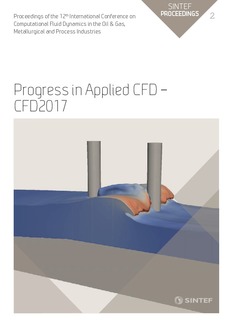| dc.description.abstract | When installing gravity foundations for offshore structures such as wind power stations or oil platforms, the seabed needs to be excavated for providing enough stability. To minimize the impact on the surrounding fauna and the installation costs, steep but stable slopes are desired. The work presented is done in a research project on the numerical investigation of the stability of submarine slopes, particularly under the impact of influences like material removal or wave-induced disturbances. The method used in the current project is coupled CFD-DEM: while the dynamics of the fluid phase (water and in some cases water and air) are handled with computational fluid dynamics (CFD), the soil is modelled by spheres, whose motion is calculated with a discrete element method (DEM). Force models are used for considering the particles’ effect on the fluid and vice versa, a void fraction field accounts for the volume of the particles on the CFD side. Due to the high number of particles in the domain only unresolved CFD-DEM (cf., e.g. Zhou (2010)) is suitable: in this case the particles are smaller than the cells of the CFD mesh. In the presented work the investigations concentrated on the validation of the CFD-DEM models against small-scale experiments that were conducted by the authors. In a first step, the used materials were characterized and a lubrication force model was implemented. Furthermore, some basic investigations on the topic of dilatancy were carried out. Then an experimental setup and an according simulation were compared. In addition to that a three phase (air, water, particles) solver was used to depict the effect of surface waves onto the particle bed. For the calculations CFDEM®coupling was used. CFDEM®coupling is an Open Source software for coupled CFD-DEM simulations. It uses the CFD framework of the Open Source CFD code OpenFOAM® and the DEM framework of the Open Source code LIGGGHTS®. Both CFDEM®coupling and LIGGGHTS® have been presented before (cf., e.g. Goniva et al. (2012), Kloss et al. (2012)), the used model equations were validated against analytical solutions and literature. | |
